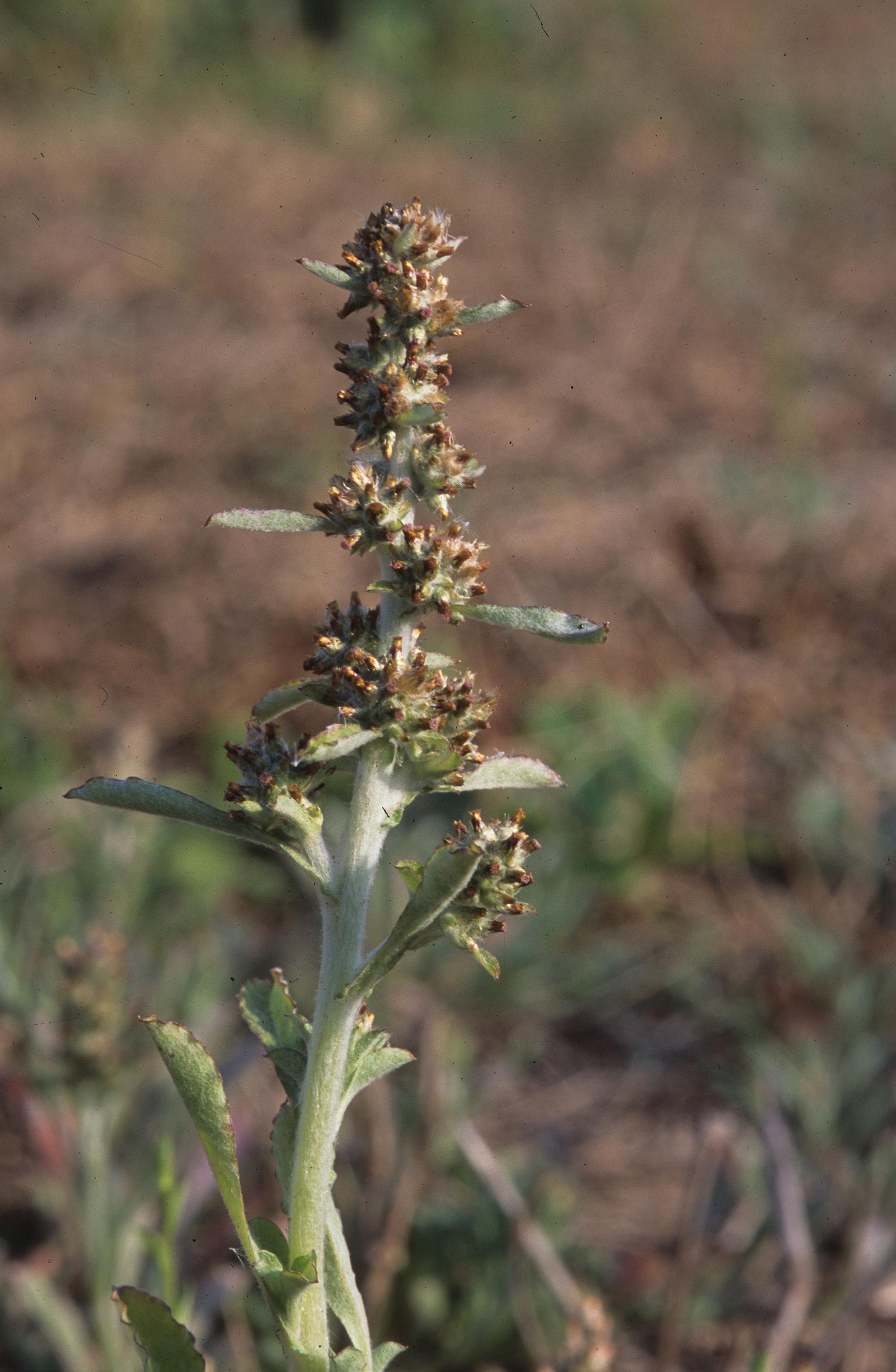Difference between revisions of "Gamochaeta coarctata"
KatieMccoy (talk | contribs) |
KatieMccoy (talk | contribs) |
||
| Line 34: | Line 34: | ||
===Phenology=== <!--Timing off flowering, fruiting, seed dispersal, and environmental triggers. Cite PanFlora website if appropriate: http://www.gilnelson.com/PanFlora/ --> | ===Phenology=== <!--Timing off flowering, fruiting, seed dispersal, and environmental triggers. Cite PanFlora website if appropriate: http://www.gilnelson.com/PanFlora/ --> | ||
| − | This species has been observed to flower from February to June as well in November | + | This species has been observed to flower from February to June as well in November<ref name=fsu/>. |
<!--===Seed dispersal===--> | <!--===Seed dispersal===--> | ||
<!--===Seed bank and germination===--> | <!--===Seed bank and germination===--> | ||
| Line 41: | Line 41: | ||
<!--===Use by animals===--> <!--Herbivory, granivory, insect hosting, etc.--> | <!--===Use by animals===--> <!--Herbivory, granivory, insect hosting, etc.--> | ||
<!--===Diseases and parasites===--> | <!--===Diseases and parasites===--> | ||
| + | |||
==Conservation and Management== | ==Conservation and Management== | ||
==Cultivation and restoration== | ==Cultivation and restoration== | ||
Revision as of 16:49, 3 May 2016
| Gamochaeta coarctata | |
|---|---|

| |
| Photo was taken by Gil Nelson | |
| Scientific classification | |
| Kingdom: | Plantae |
| Division: | Magnoliophyta - Flowering plants |
| Class: | Magnoliopsida – Dicotyledons |
| Order: | Asterales |
| Family: | Asteraceae ⁄ Compositae |
| Genus: | Gamochaeta |
| Species: | G. coarctata |
| Binomial name | |
| Gamochaeta coarctata (Willd.) Kerguélen | |

| |
| Natural range of Gamochaeta coarctata from USDA NRCS Plants Database. | |
Common name: gray everlasting
Contents
Taxonomic notes
Synonyms: Gamochaeta americana (P. Miller) Weddell; Gnaphalium purpureum Linnaeus var. americanum (P. Miller) Klatt
Description
A description of Gamochaeta coarctata is provided in The Flora of North America.
Distribution
Ecology
Habitat
This species has been found in open areas in and between shrubs, clearings of bottomland woodlands along rivers, and hillside bogs. It has been observed to grow shaded and partially shaded environments in dry and moist sandy loam[1]. This species also has been seen growing in human disturbed areas such as roadsides, vacant lots, swamp clearings, lawns, trails, golf courses, waste places, around houses and public buildings, and along fences. Associated species includes Soliva pterasperma, Oxalis dillenii, Parthenocissus quinquefolia, Veronica arvensis, Triodanis perfoliata, Dichondra carolinensis, Oplismenus setarius, Quercus, Carya, Pinus, and Sassafras. Also includes cabbage palm [1].
Phenology
This species has been observed to flower from February to June as well in November[1].
Conservation and Management
Cultivation and restoration
Photo Gallery
References and notes
Florida State University Robert K. Godfrey Herbarium database. URL: http://herbarium.bio.fsu.edu. Last accessed: June 2014. Collectors: Loran C. Anderson, R. K. Godfrey, R. Kral, C. Jackson, Jean Wooten, A. Gholson Jr., Richard S. Mitchell, Angela M. Reid, K. M. Robertson, T. MacClendon, and K. MacClendon. States and Counties: Florida: Escambia, Franklin, Gadsden, Holmes, Jackson, Jefferson, Leon, Liberty, Okaloosa, Wakulla, Walton, and Washington.
- ↑ 1.0 1.1 1.2 Florida State University Robert K. Godfrey Herbarium database. URL: http://herbarium.bio.fsu.edu. Last accessed: June 2014. Collectors: Loran C. Anderson, R. K. Godfrey, R. Kral, C. Jackson, Jean Wooten, A. Gholson Jr., Richard S. Mitchell, Angela M. Reid, K. M. Robertson, T. MacClendon, and K. MacClendon. States and Counties: Florida: Escambia, Franklin, Gadsden, Holmes, Jackson, Jefferson, Leon, Liberty, Okaloosa, Wakulla, Walton, and Washington.